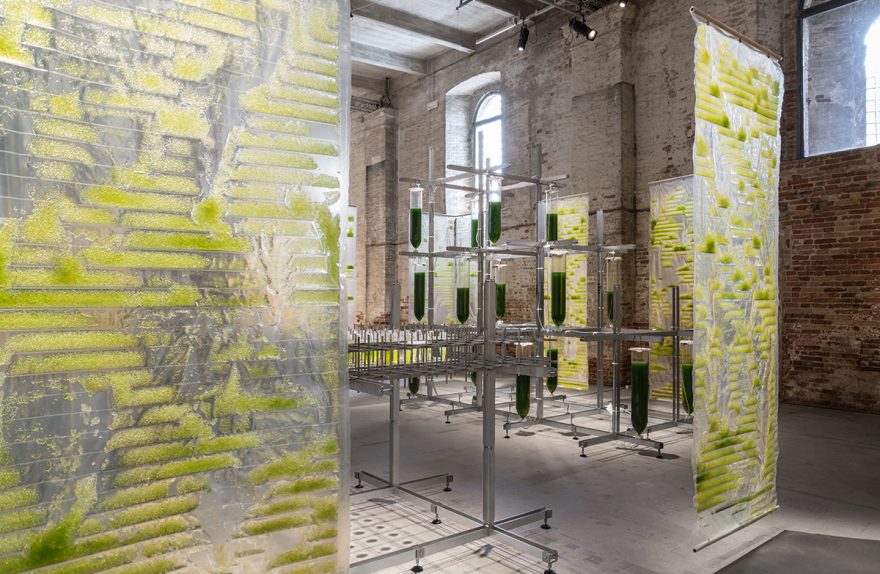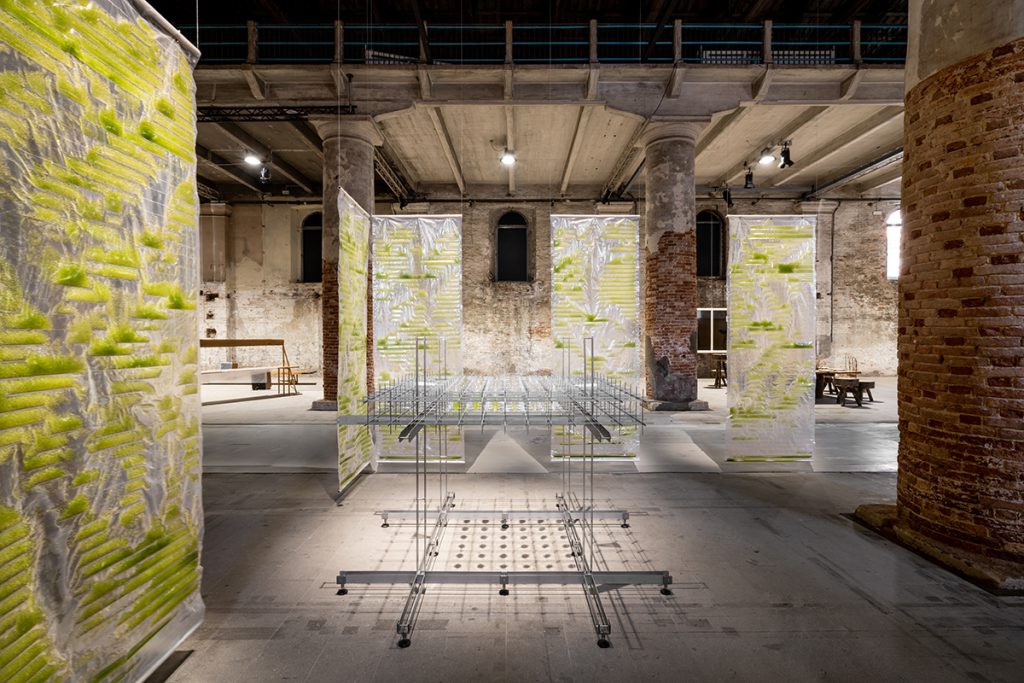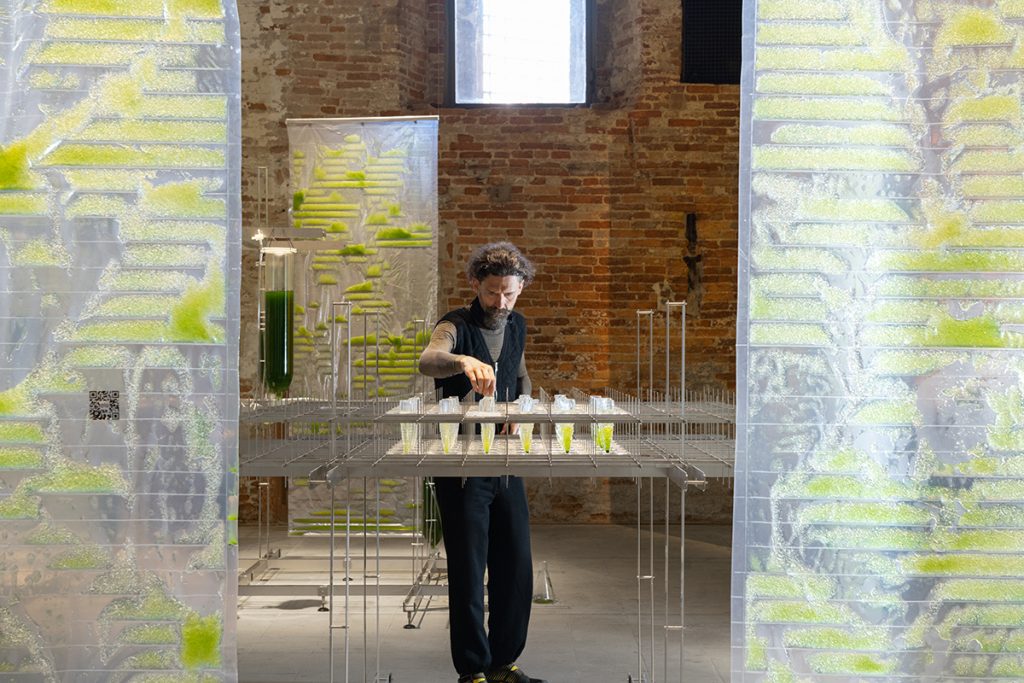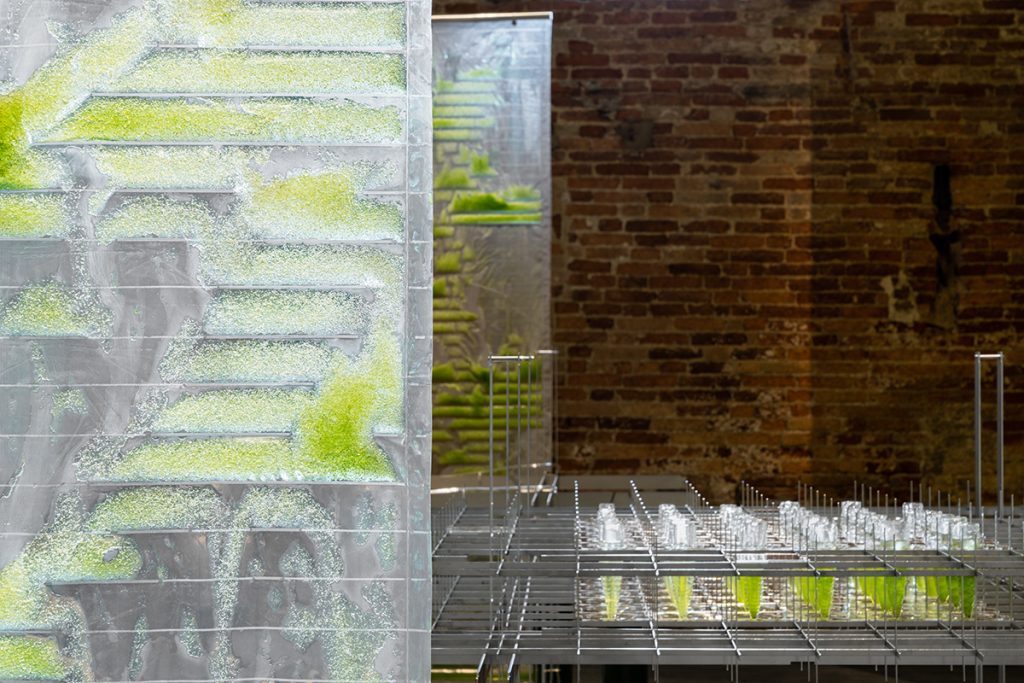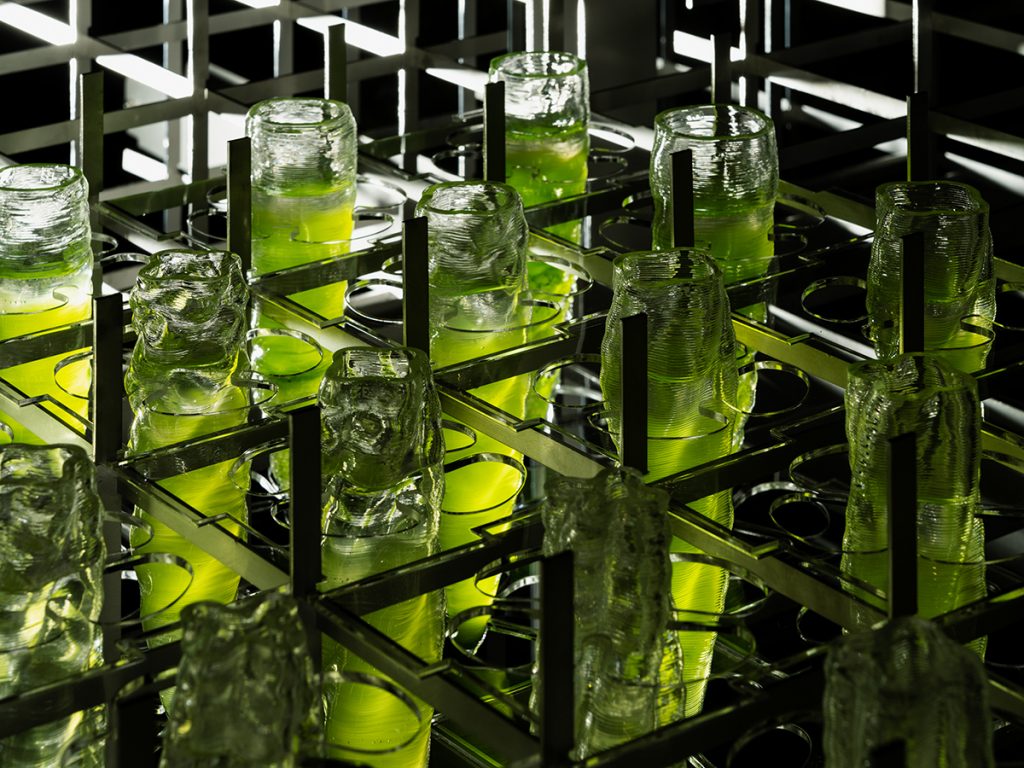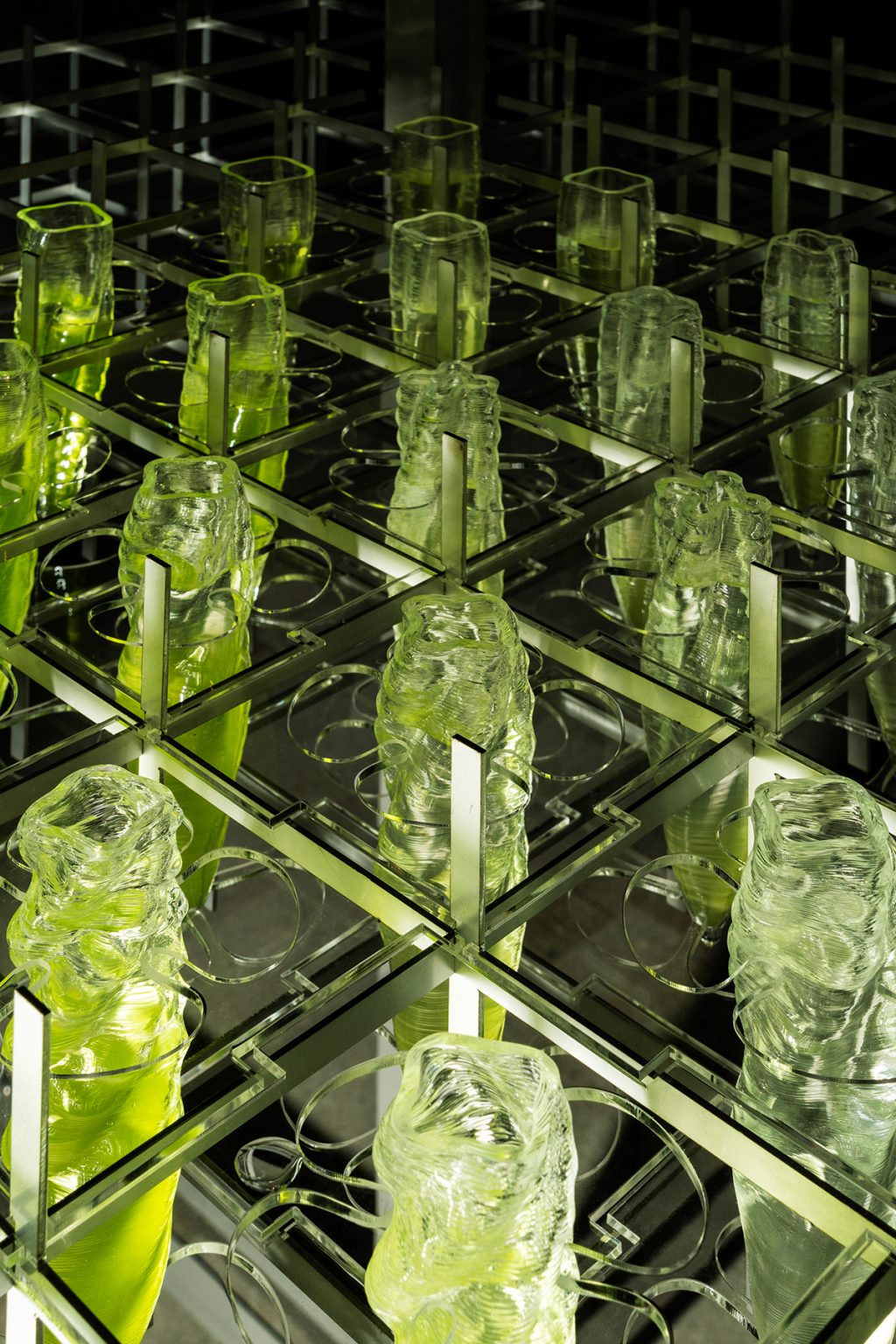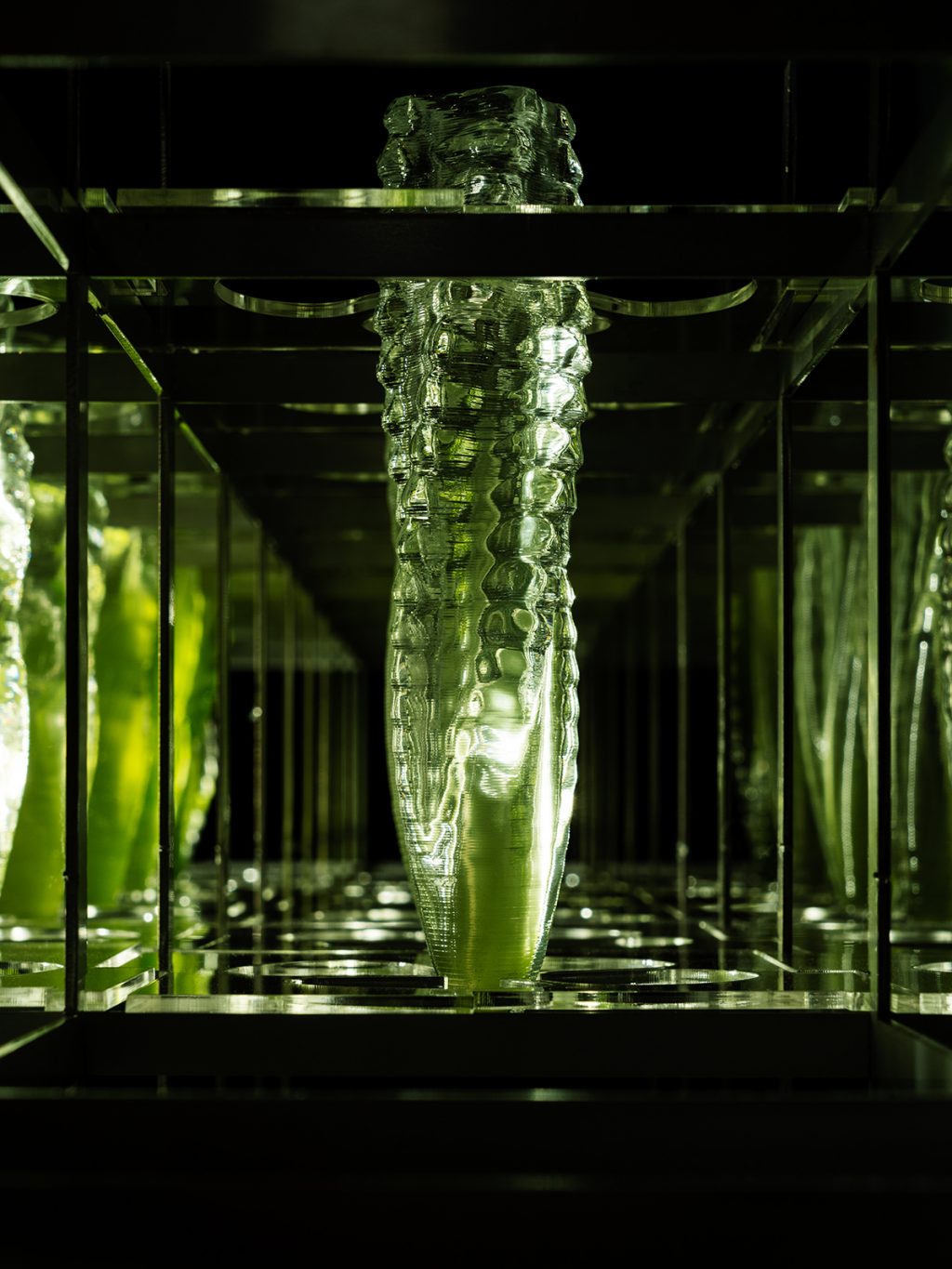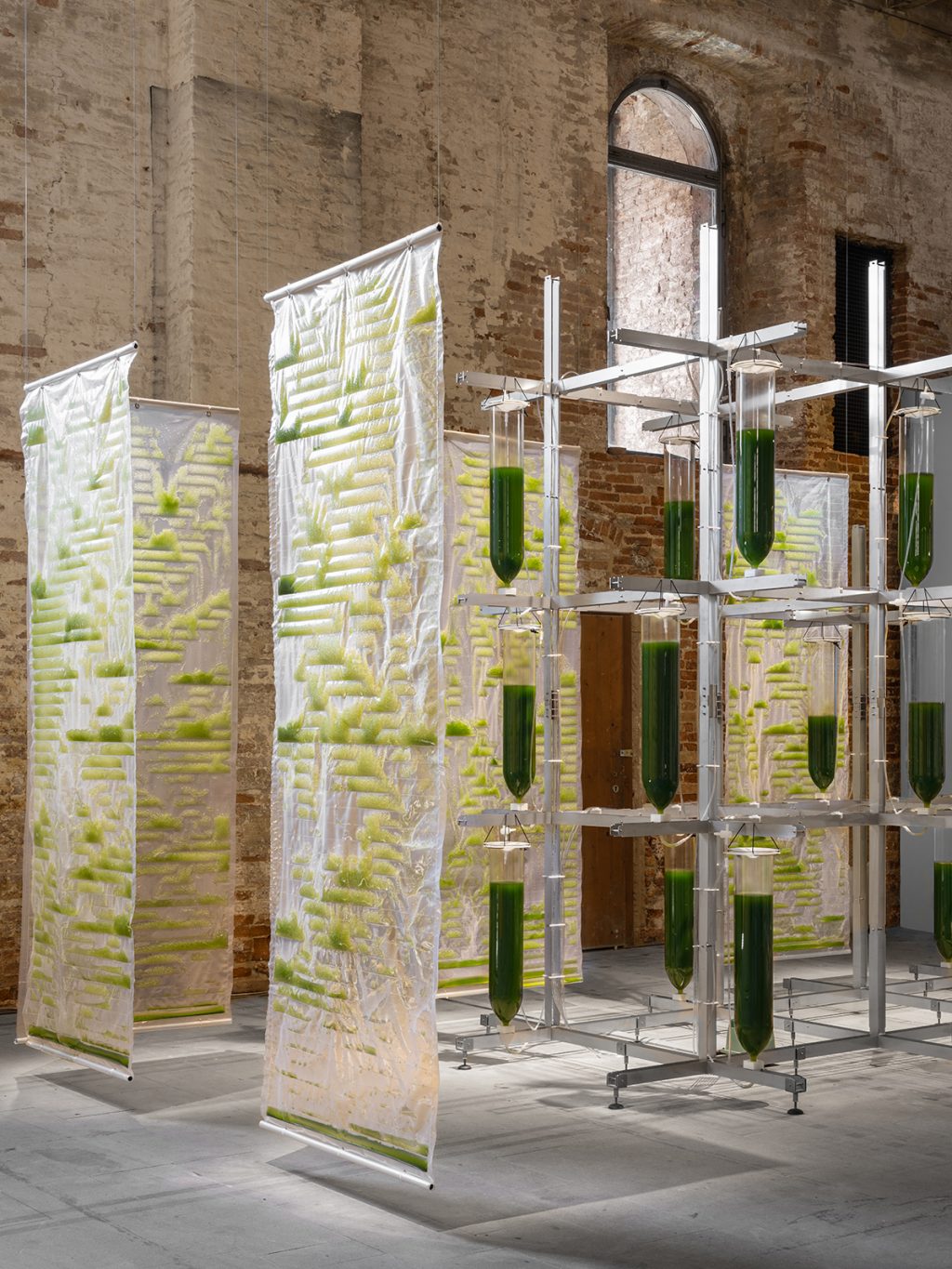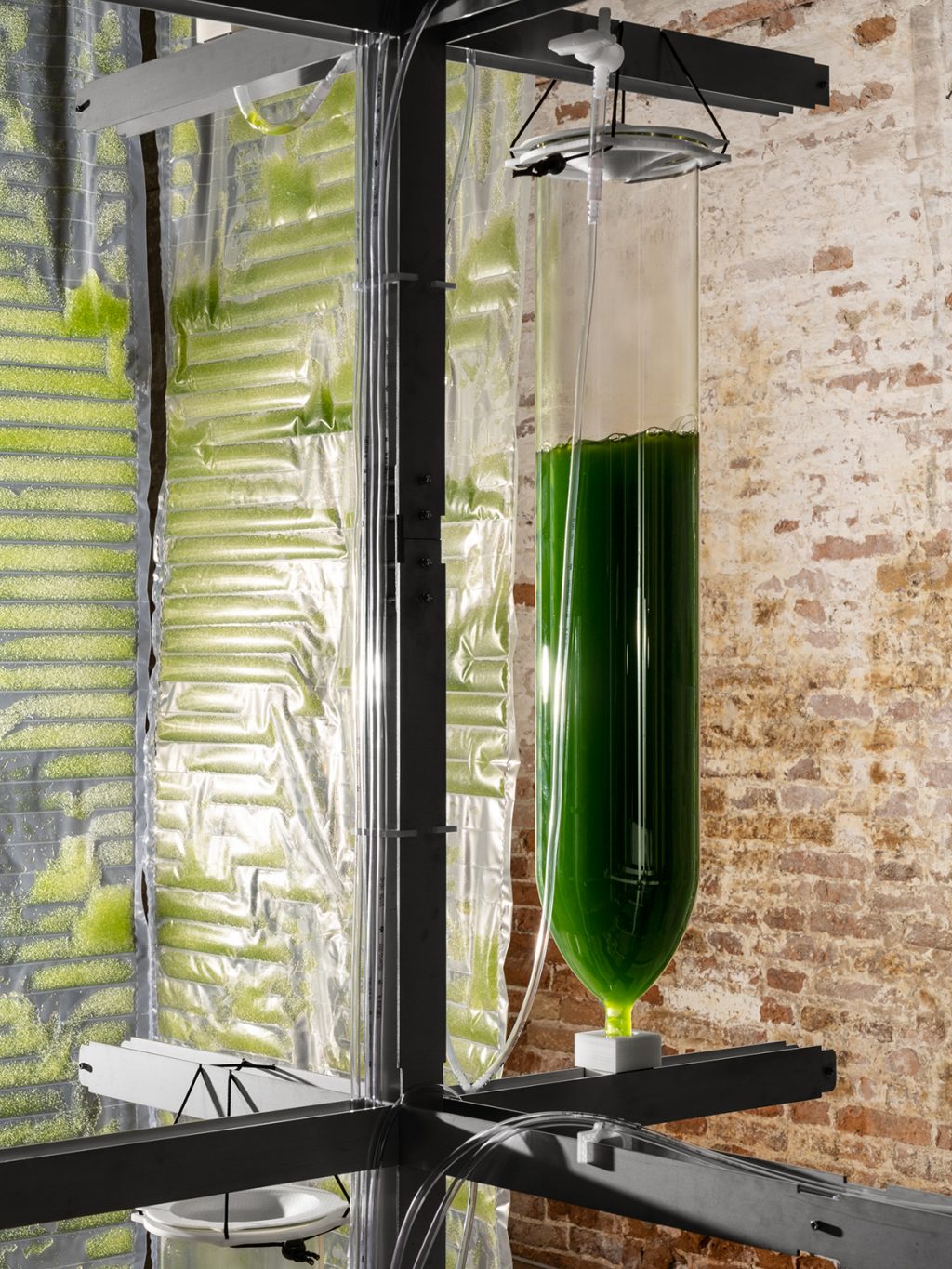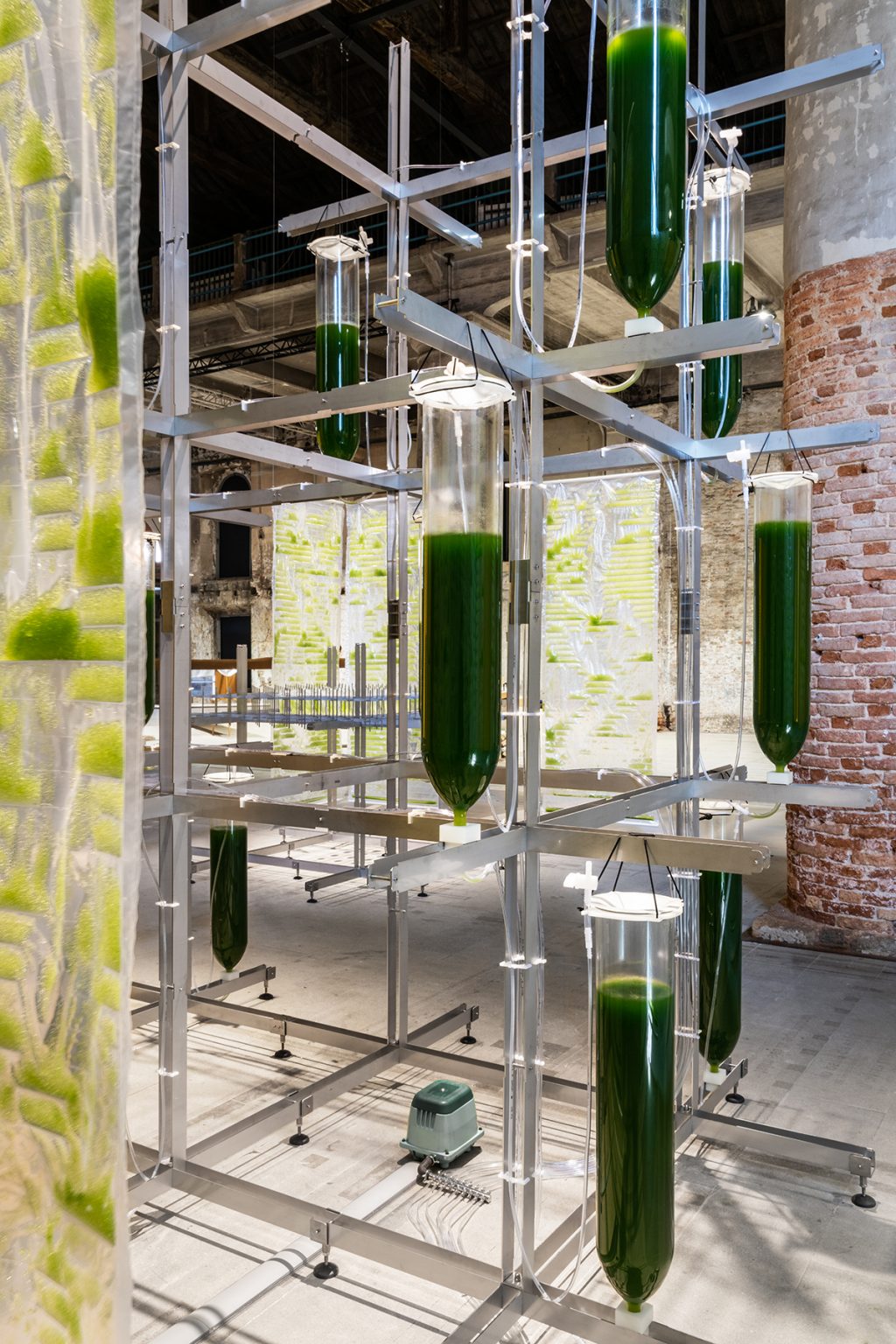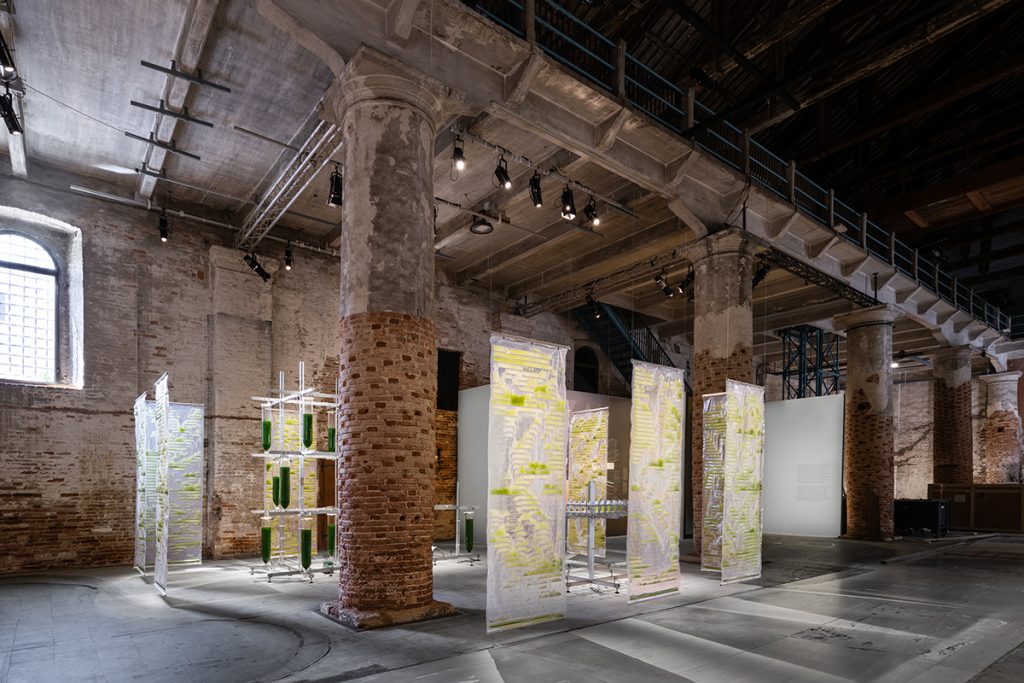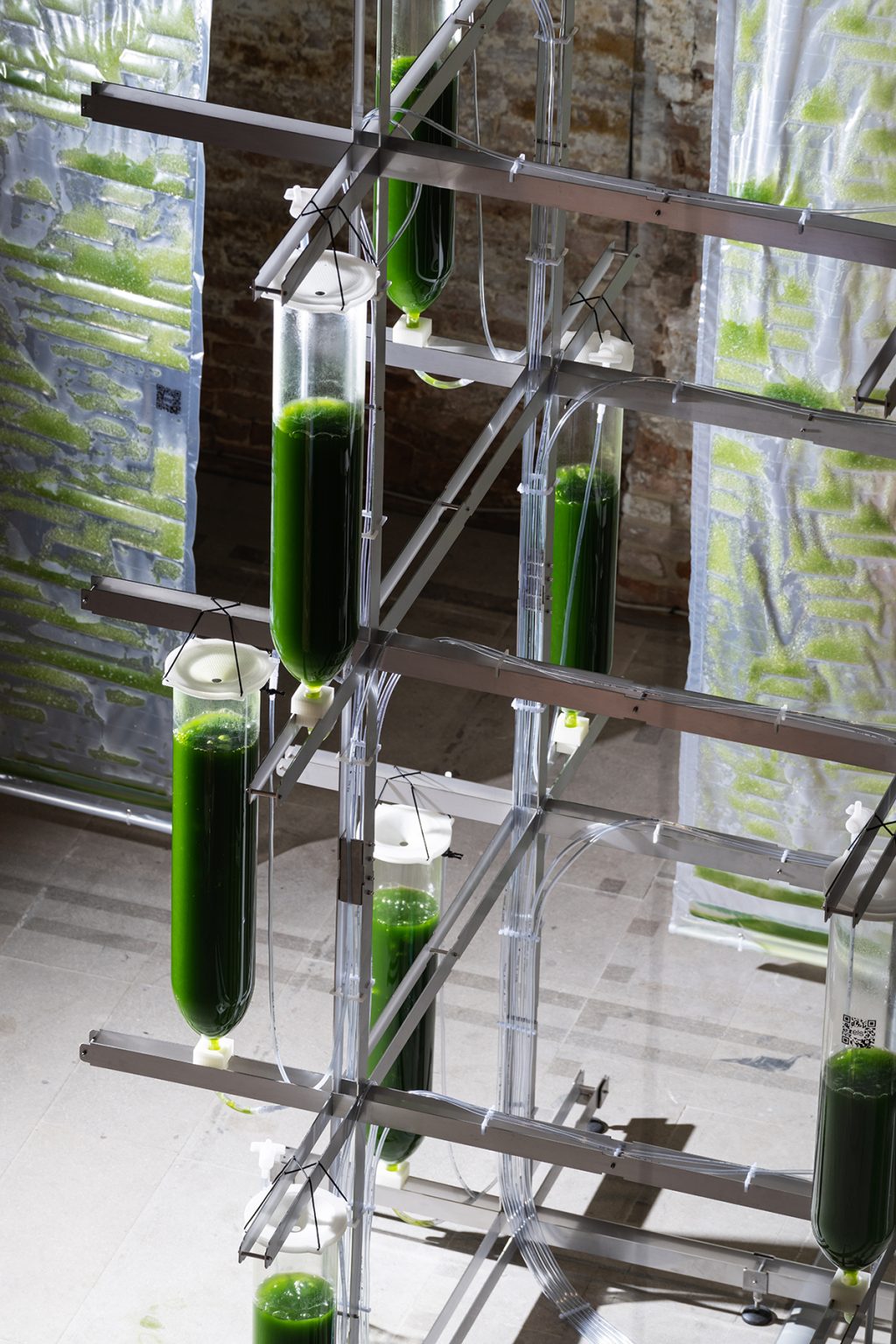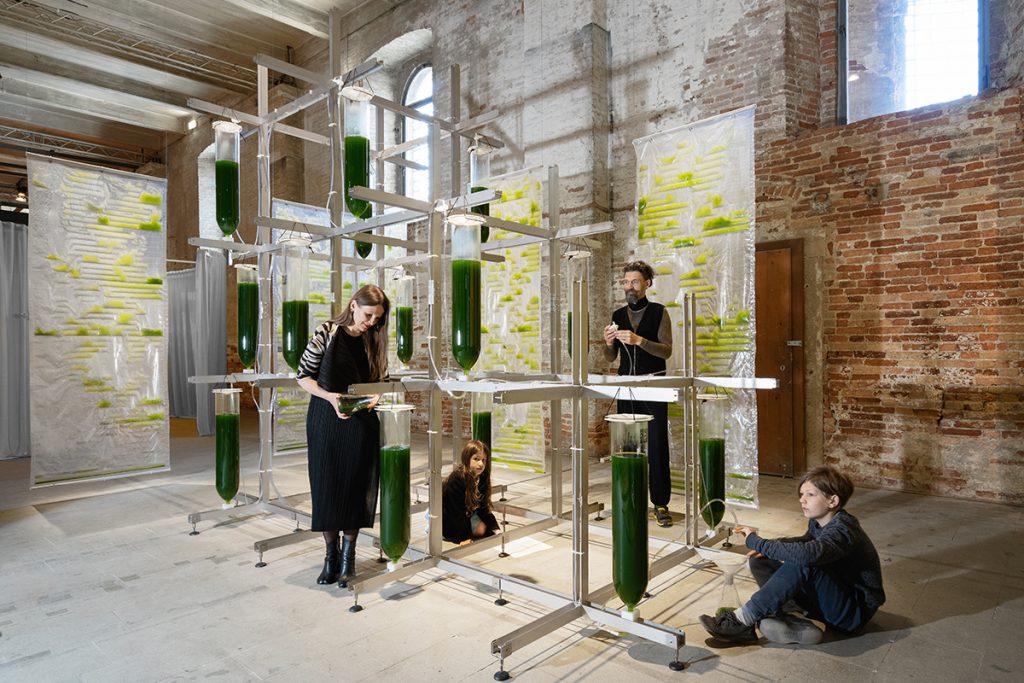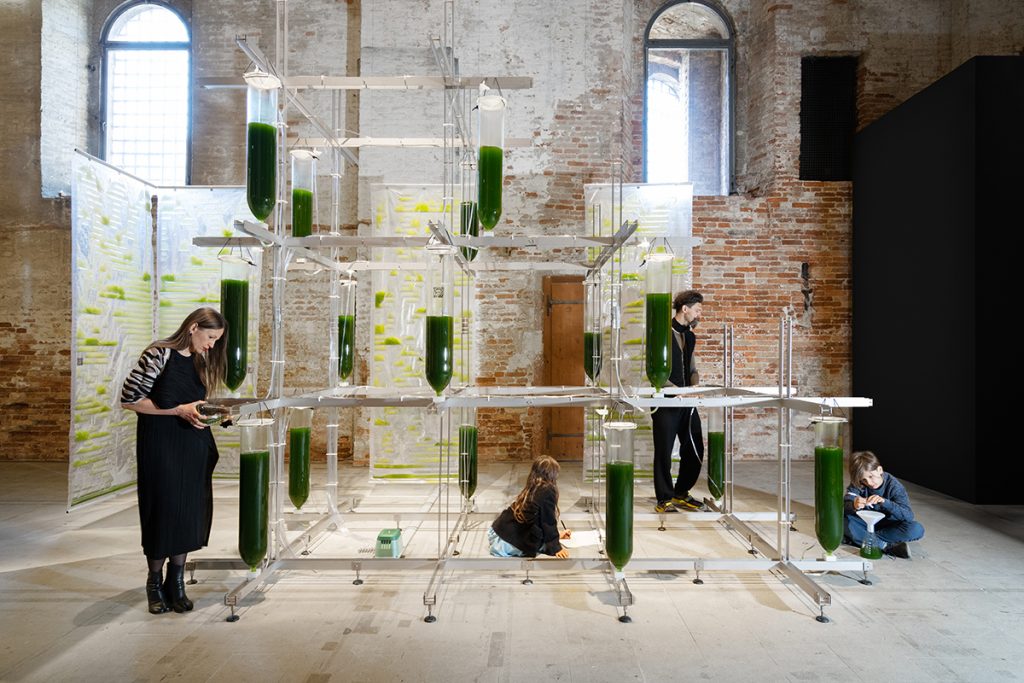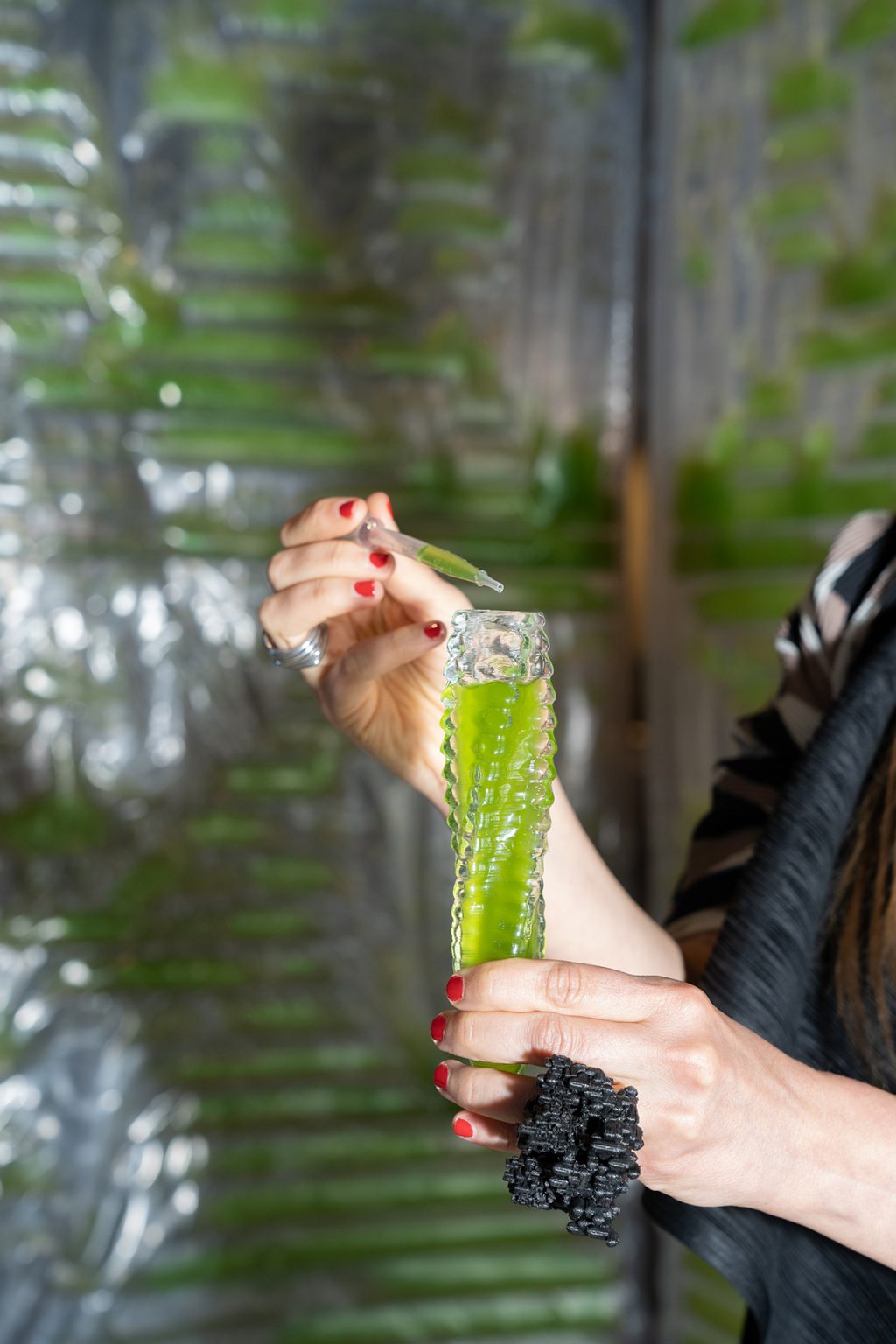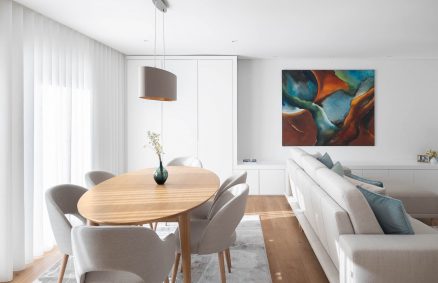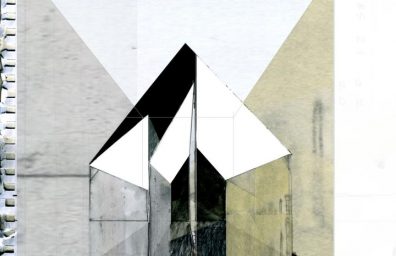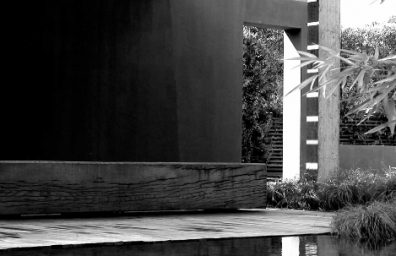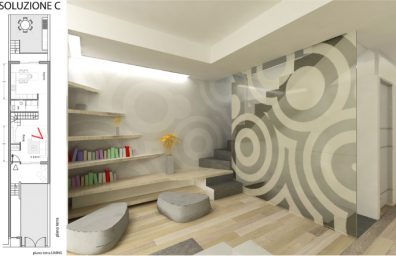The installation that Claudia Pasquero and Marco Poletto, founders of ecoLogicStudio were invited to present is an urban laboratory that combines advanced architecture with microbiology for the construction of an artificial habitat, managed by a set of systems that allow the cultivation of microalgae in an urban setting.
Within the “As New Households” section in the Corderie dell'Arsenale, the studio presents BIT.BIO.BOT - a 1: 1 scale installation, an immersive experiment in the domestic cultivation of the urban microbiome. The experimental space is designed to test the coexistence between humans and non-human organisms in the post-pandemic Urbansphere.
“BIT.BIO.BOT contributes to the questioning and rethinking of some of the logic that led us to the current health crisis. If we all, collectively, daily and locally, we will help transform pollutants atmospheric and water contaminants in highly nutritious foods, there will be fewer opportunities for unbalanced viral ecologies to exploit chains of unsustainable food supply and polluted atmospheres for reach our body and cause us damage ". - says Claudia Pasquero, co-founder of ecoLogicStudio.
Claudia Pasquero and Marco Poletto, founders of ecoLogicStudio www.ecologicstudio.com and their research partners The Synthetic Landscape Lab Innsbruck University and Urban Morphogenesis Lab Bartlett UCL were invited to participate in "How will we live together?", The 17th International Exhibition of Architecture - The Venice Biennale curated by Hashim Sarkis, from 22 May to 11 November 2021.
The main process at the base of BIT.BIO.BOT is photosynthesis, fed by the sun and by the metabolism of living cultures of Spirulina Platensis, unicellular microbes often referred to as blue-green micro algae, and of Chlorella SP. These living organisms are among the oldest on Earth and have developed a unique biological intelligence that allows them to convert solar radiation into oxygen and biomass with unparalleled efficiency.
Il advanced architectural system on display at the Corderie is the result of 10 years of research on bio-digital design, developed by ecoLogicStudio and combines computational design (BIT) strategies with proprietary manufacturing techniques (BOT) to implement a collective microbiological cultivation (BIO) protocol.
BIT.BIO.BOT consists of three fluidly interconnected systems that embody the fundamental architectural environments of a future home: the Living Cladding, Vertical Garden and convivium.
The Living Cladding
Living Cladding redefines the boundaries between the human and non-human realms e between indoor and outdoor architecture. It consists of ten PhotoSynthEtica tents. The exclusive version unveiled at the Corderie presents a morphological pattern inspired by the surrounding brick walls, highlighting the microbiological nature of the Venetian architectural fabric.
Furthermore, its articulation increases the interaction between the growth of microalgae in the bio-gel and the environment, as well as their shielding and shading potential. Each tent is three meters high and one meter wide, and features 35 meters of digital welding, which forms a cavity capable of holding 7 liters of microalgae cultures. For more information on the PhotoSynthEtica Coating System, please visit: www.photosynthetica.co.uk
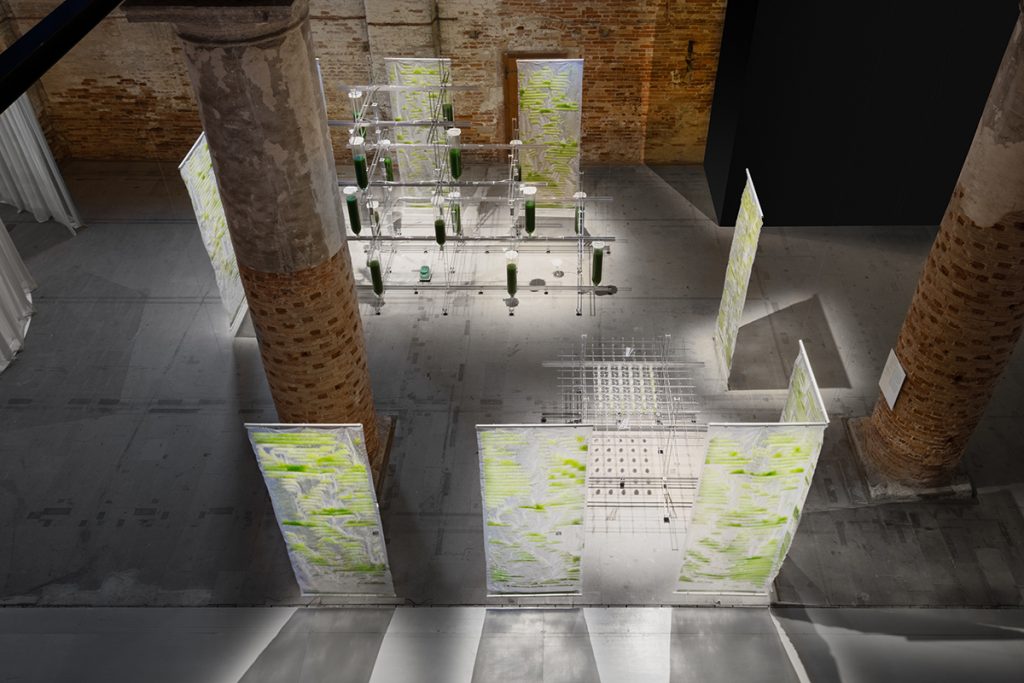
The Vertical Garden
The Vertical Garden creates a dense buffer zone located between the Living Cladding and the Convivium, dedicated to an intensive model of vertical cultivation of algae. On a three-meter-high, fully reversible stainless steel structure, they are housed 15 Bio-Cylinders, home growing system of algae developed by ecoLogicStudio in response to the challenges of the first lockdown caused by Covid-19, in the spring of 2020.
Each Vertical Garden module, made of laboratory borosilicate glass and 3D printed bioplastic components, houses 10 liters of microalgae cultures within a highly efficient culture medium. The algae can be harvested several times a week from each module and up to one hundred grams of biomass can be harvested, which is the recommended daily protein intake for a family of four. In addition, the Vertical Garden is capable of absorb CO2 at the rate of three large mature trees, providing a clear path to zero emissions architecture.
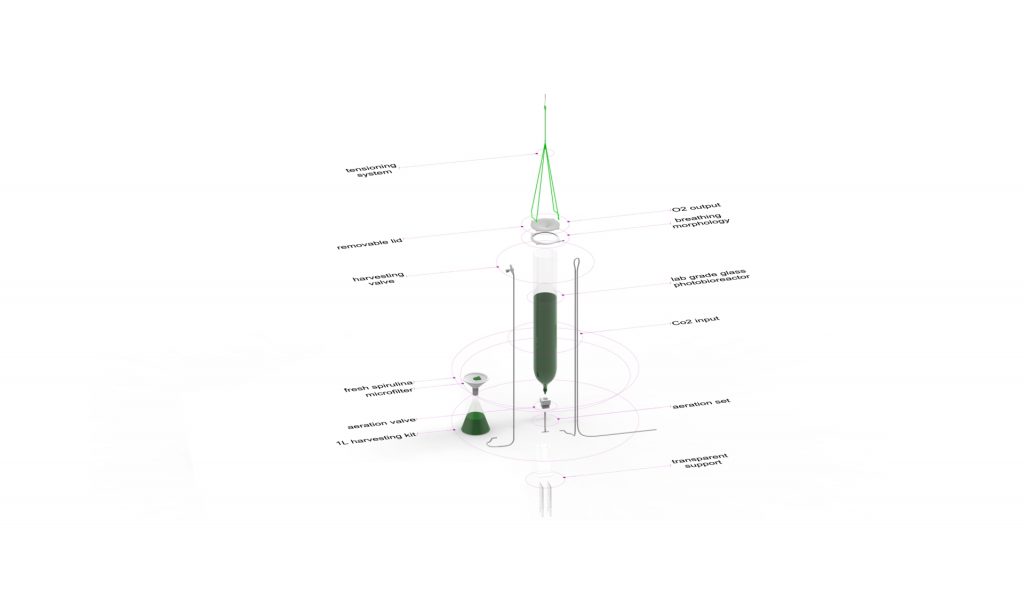
Diagrams about BioBomb 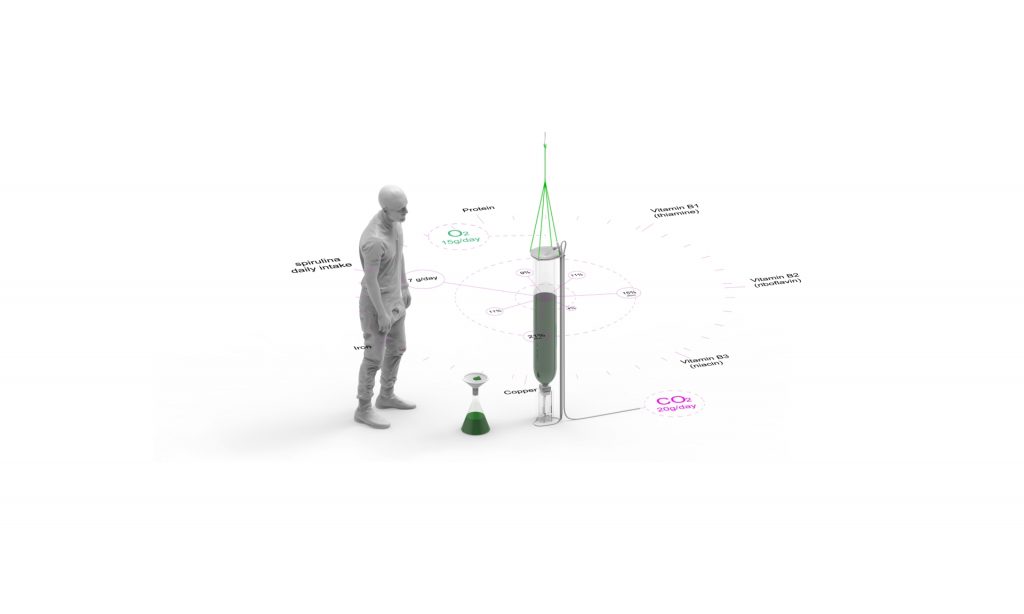
Diagrams about BioBomb 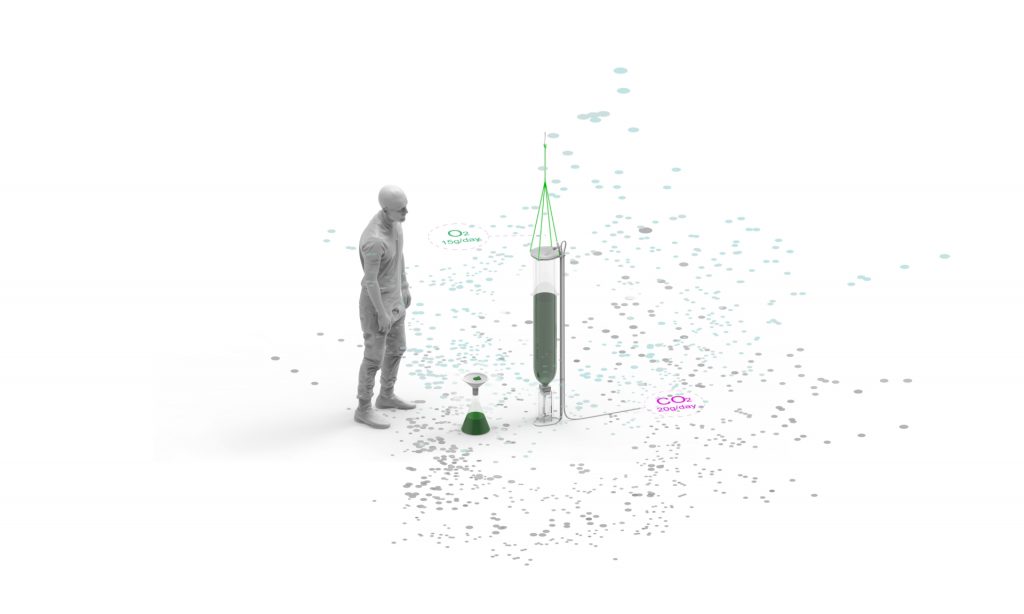
Diagrams about BioBomb 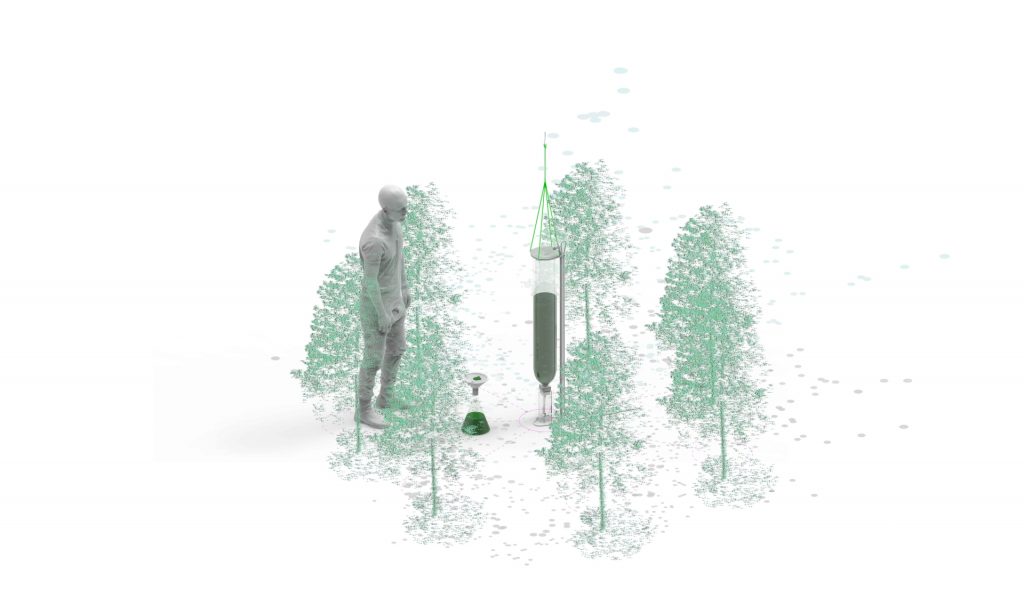
Diagrams about BioBomb 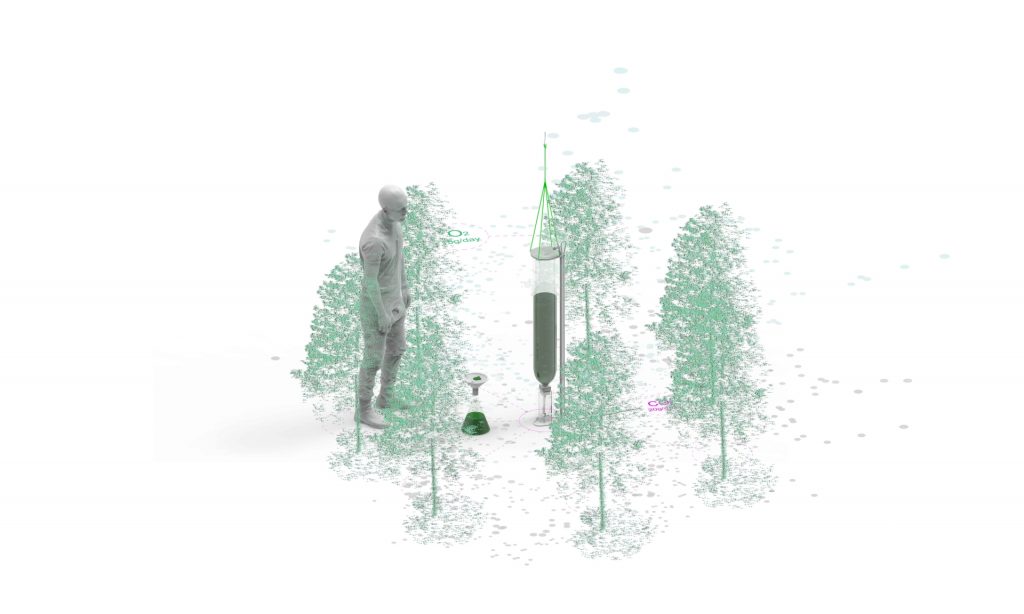
Diagrams about BioBomb 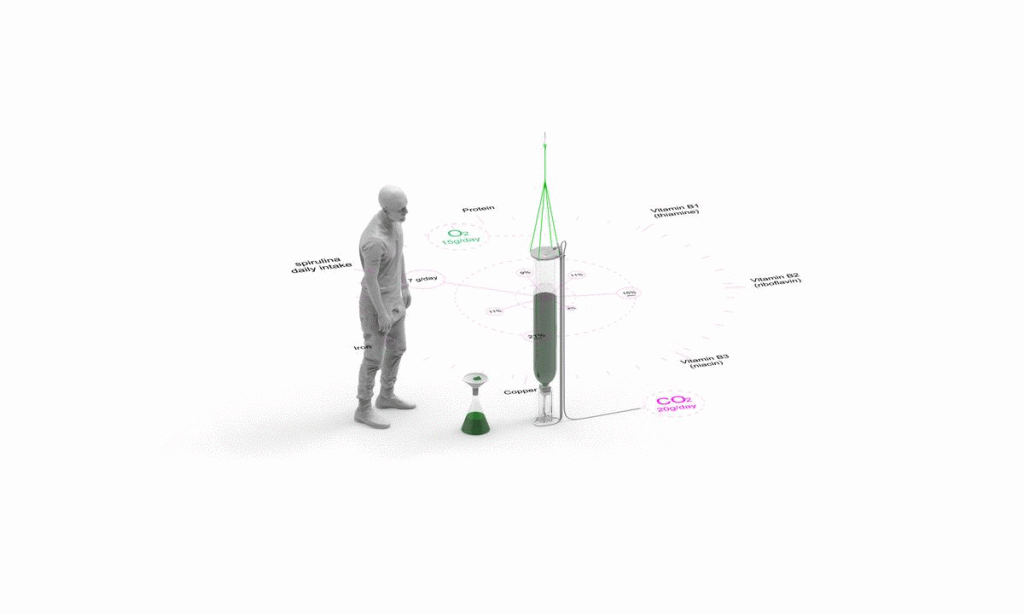
Diagrams about BioBomb
The Convivium
The Convivium is one space for sharing and collective experimentation on the future of food. It is shaped like a 2 x 2 meter table and houses 36 unique crystal pieces designed to encourage the consumption of freshly harvested Chlorella and Spirulina cells, both among the most nutritious organisms on Earth.
The crystals were designed by ecoLogicStudio and 3D printed by Swarovski with its revolutionary glass printing technology. Each piece consists of delicately fused layers of glass, arranged in a matrix that algorithmically follows the morphogenesis of microalgae cells, thus generating a variety of visual patterns. Each piece will offer a variety of opportunities to observe, transform and taste microalgae as part of a new culinary landscape.
“Every phase of the project, including its conception, manufacture, cultivation and post-Biennial re-functionalization will contribute to this overall experiment of coexistence - between us humans and within an extended environment of non-systems humans ". - says Dr. Marco Poletto
The entire installation, as well as the individual systems, are completely reversible. At the end of the Architecture Biennale, in November 2021, each unit will become an educational algae garden. Thanks to an anonymous supporter, and in collaboration with the Destination Wattens project, ecoLogicStudio has donated the installation and has already secured the transfer of BIT.BIO.BOT within the Tyrolean landscape, to become the center of educational and collected within the local community, focused on the theme of future food.
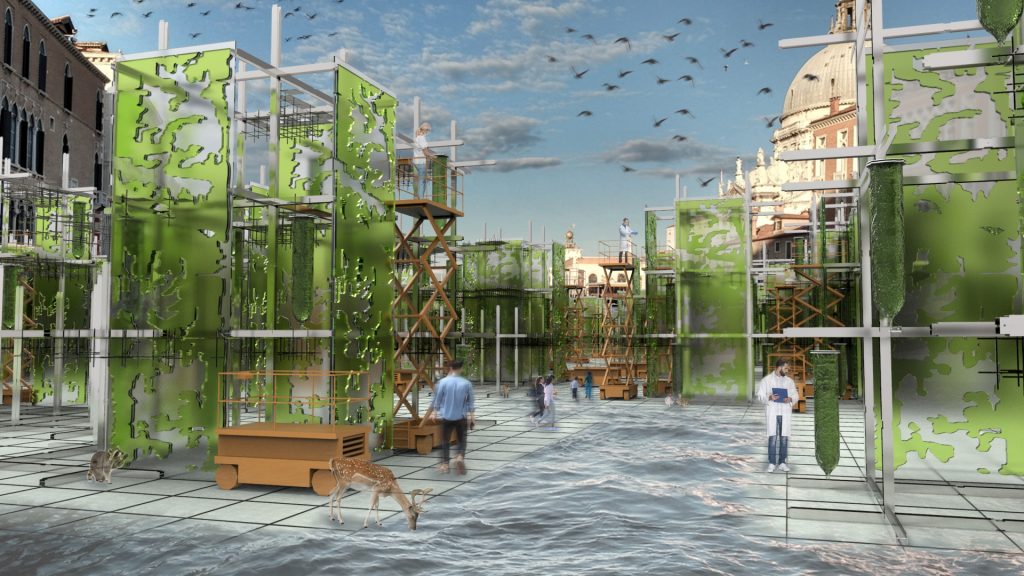
BITBIOBOT in Venice 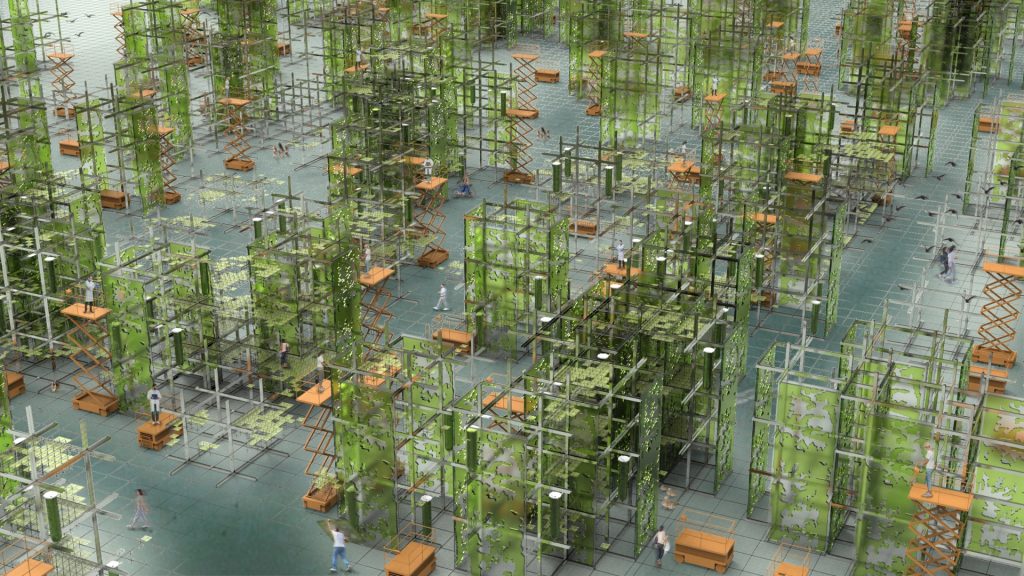
BITBIOBOT in Venice 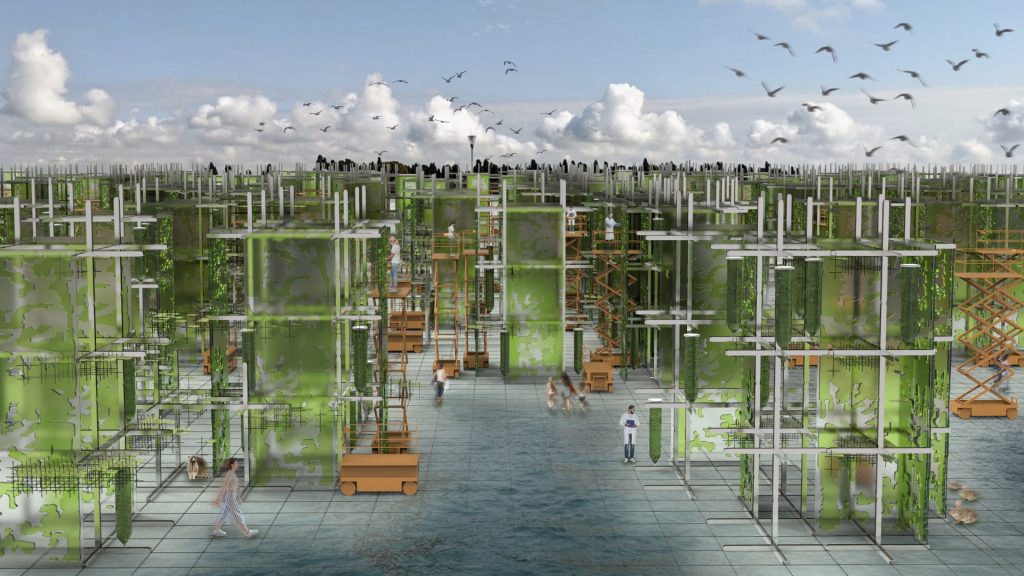
BITBIOBOT in Venice 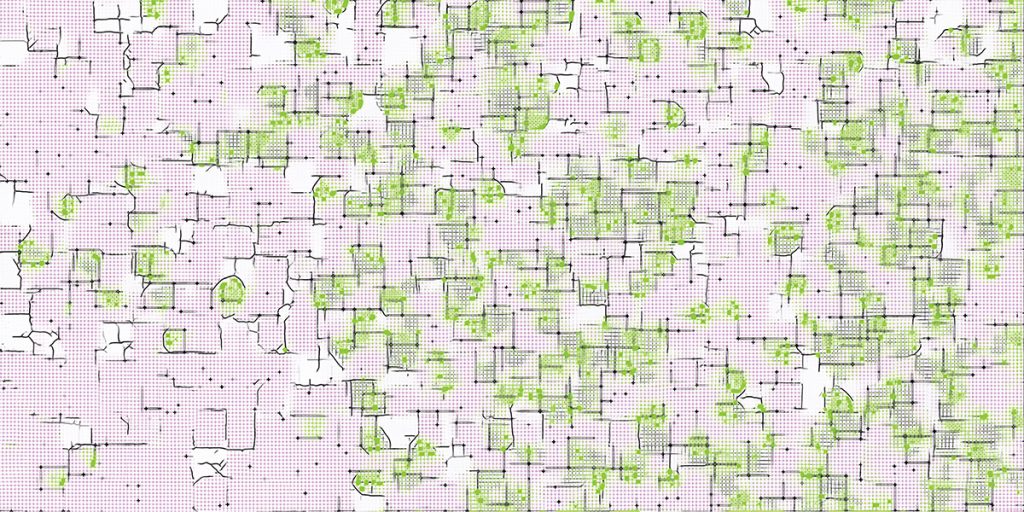
BITBIOBOT site plan
project info
Project: BIT.BIO.BOT.
Architecture Office: ecoLogic Studio (Claudia Pasquero, Marco Poletto)
Team: Claudia Pasquero, Marco Poletto with Eirini Tsomouku, Oscar Villarreal, Claudia Handler, Korbinian Enzinger, Terezia Greskova, Alessandra Poletto, Emiliano Rando, Joy Bolois
Partners: Synthetic Landscape Lab IOUD Innsbruck University, Urban Morphogenesis Lab BPRO The Bartlett UCL
Supporters: Innsbruck University, Swarovski, Ecoduna, Destination Wattens, anonymous donor
Photographer: © Marco Cappelletti

